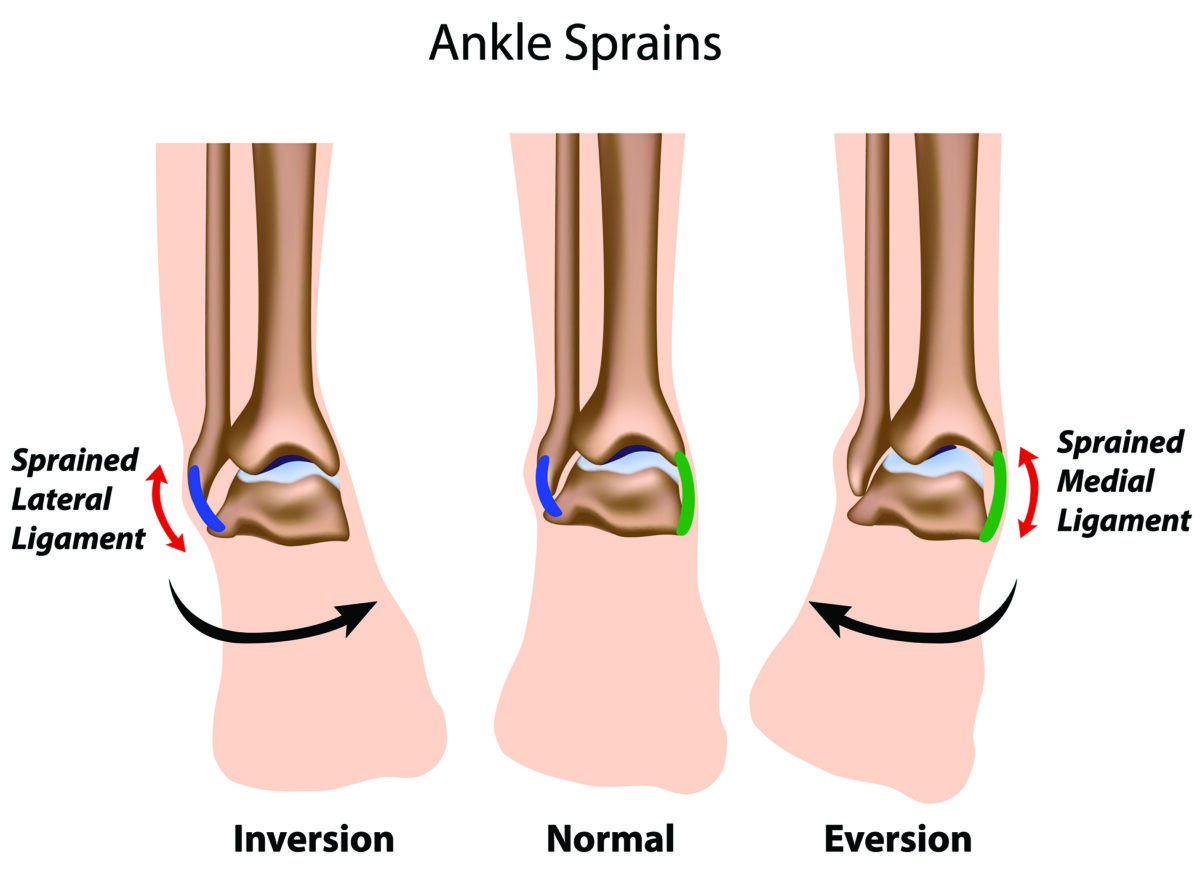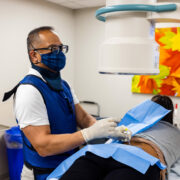
What to Do if a Badly Sprained Ankle Does Not Heal
A sprained ankle is one of the most common orthopedic injuries. It can be painful, annoying, and even prevent you from participating in your favorite sports and activities. In many cases, ankle injuries heal with the help of conservative treatments. What happens, however, when an ankle sprain simply does not heal?
If your initial ankle sprain recovery lasts longer than four weeks or appears to be getting worse, it is time to consult with an orthopedic expert. Every year, hundreds of sprained ankles are treated by the EmergeOrtho—Triangle Region foot and ankle specialists, and by our orthopedic urgent care providers. Do not let a prolonged ankle sprain keep you from doing what you enjoy most.
How Do Ankle Sprains Happen?
At EmergeOrtho—Triangle Region, our board-certified orthopedic foot and ankle doctors work together to provide precision diagnosis and treatment of ankle sprains.

Common causes of ankle sprains include:
- Sudden, unnatural movements
- Traumatic impacts
- Extreme overuse
You do not have to be an athlete to experience a sprained ankle. Sports and activities such as running, football, and soccer are not the only causes of sprained ankles. A sprained ankle can be the result of something as unassuming as an awkward trip on the sidewalk, a job-related incident, or even an awkward misstep getting out of a car.
What Treatments Are Recommended for a Mild Ankle Sprain?
If you have experienced a mild injury to the ligaments of the ankle, simple treatment steps can treat the injury, which often include:
- The RICE Method
RICE stands for rest, ice, compression, and elevation. Applying the RICE method to the injured area can relieve pain and ankle swelling, and enable healing.
- Medication
Over-the-counter, anti-inflammatory medication can reduce pain and ankle swelling.
- Assistive Devices
Compression wraps and braces can help limit movement, preventing more damage to the ankle.
Even in cases of mild sprains, talking to your doctor about appropriate treatments should always be the first step you take.
How Long Does a Sprained Ankle Take to Heal?
Mild, low-grade ankle sprains will usually heal in one to three weeks with proper rest and care. Moderate injuries may take between three and four weeks. Because of limited blood flow to the ligaments of the ankle, more severe ankle injuries may take between three and six months to heal.
How to Heal a Sprained Ankle That is More Serious
Treatment varies depending on the type and severity of the ankle sprain. Most likely, treatment for a severe ankle sprain involves one or more of the following:
- Immobilization
Your doctor may fit you in a boot or prescribe crutches for some time to prevent movement of the ankle joint and to allow the ankle to heal.
- Physical Therapy
Our physicians often prescribe physical therapy as an integral part of healing a badly sprained ankle. It is a proactive approach to see if you can get better on your own or if more action may be needed. Physical therapy ultimately helps build back strength, range of motion, stability, and confidence on your feet.
- Steroid Injections
If inflammation will not go away, following the treatment protocols listed above, your doctor may prescribe steroid injections.
When is an Ankle Sprain More Than an Ankle Sprain?
When an ankle sprain will not heal, there could be something else going on. It is quite common to experience other injuries alongside an ankle sprain. A sprain might mask a more serious ankle condition like a fracture, stretched or torn tendons, torn ligaments, or a cartilage injury.
If you are experiencing any of the following symptoms, the first step is to consult with an orthopedic physician who specializes in foot and ankle conditions and injuries:
- Persistent ankle swelling
- Continued feelings of instability
- Problematic mobility on uneven ground
- Ongoing weakness in the ankle
- General discomfort
Untreated conditions can worsen into chronic ankle sprains and instability, both of which can be debilitating in the long term. This may also make arthritis of the ankle more likely, especially if the ankle continues to deteriorate.
Diagnostic imaging is the next step to determining the best method to treat your ankle. With an MRI, an orthopedic provider can work with you on an approach to treat any underlying conditions or extensive injuries.
One area of concern linked to lingering ankle problems is chronic ankle instability. This condition occurs when ligaments and tissue cannot sufficiently stabilize the ankle. In these cases, they must be recreated. Advanced technology and a better understanding of ankle ligaments have enabled EmergeOrtho—Triangle Region to offer sophisticated procedures to anatomically reconstruct the ligament. In turn, ankle stability and foot and ankle pain are greatly improved.
In some cases, when conservative treatment methods have not been effective in addressing ankle sprains and painful symptoms, surgery may be recommended. An EmergeOrtho—Triangle Region doctor may suggest ankle surgery, such as minimally invasive arthroscopy or a ligament-tightening procedure.
EmergeOrtho—Triangle Region’s primary goal is to help you Emerge stronger. Healthier. Better.
If you have an ankle injury that continues to cause pain and instability, do not wait for treatment, request an appointment now. Or, call one of our EmergeOrtho—Triangle Region offices anytime at 919-220-5255.








